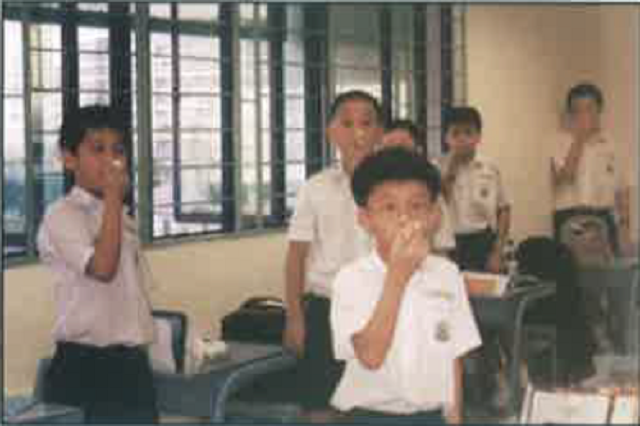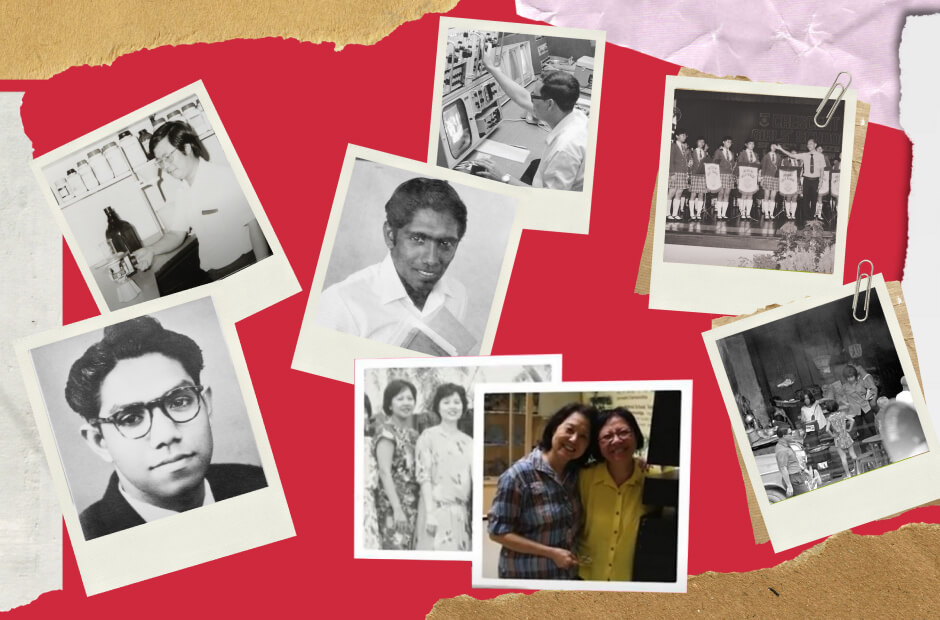Creating light-up wristbands to learn about circuitry
At Queenstown Primary School, Mrs Chia Su Sze, Head of Department of Science, engages her students in an innovative lesson on electricity. Using LED bulbs, batteries, thread and fabric, her students apply electrical system concepts to design and create their own wearable soft circuitry that can light up.
Drawing inspiration from her personal interest in sewing, Mrs Chia developed this activity for her students as she wanted them to learn about science beyond their textbooks. By encouraging them to tinker and create their own soft circuitry, she ignites their curiosity and creativity for their learning to be enjoyable and relevant.
Blocked arteries? Let’s construct models to learn how to unclog them
Mrs Preeti Kulkarni, Subject Head of Biology at Compassvale Secondary School, excites her students to learn about coronary heart disease by involving them in designing and constructing a device that shows how blocked arteries can be unclogged through the use of materials such as balloons, plastic bottles, straws and plasticine.
Mrs Preeti highlighted that constructing these models are challenging for the students as it mirrors the complexity of a real coronary angioplasty, where there is no single, straightforward approach to unclog a blocked artery.
“Many of them use balloons to inflate the tubes and face difficulties doing that. There have been some mishaps, like when their balloons accidentally burst,” says Mrs Preeti. “By encountering these challenges, they understand the complexities that doctors face when removing plaque from a blocked artery.”
Through this activity, Mrs Preeti hopes to connect her students’ learning to real-world medical scenarios, making Science lessons more relatable to them.
Breaking down the topic of radioactivity by rolling dice
Ms Tay Su Lynn, Lead Teacher (Physics) at Catholic Junior College, engages her students in a dice-rolling activity that simulates the concept of radioactive decay. Through this hands-on activity, students learn about half-lives and the random nature of radioactive decay. They also gain a better understanding of why specific radioactive substances are chosen for medical applications, such as radiotherapy and the use of iodine in cancer treatment.
Ms Tay’s motivation in carrying out this lesson is to help her students appreciate that radioactivity is not an abstract concept confined to laboratories or nuclear power plants, but has real-world applications.
Ms Tay was happy to learn that students welcomed seeing the fact that radioactivity could be determined mathematically in a simple manner. She shares, “Since the concepts behind radioactivity can be quite abstract, I wanted to create a fun and engaging way to help students understand them.”






